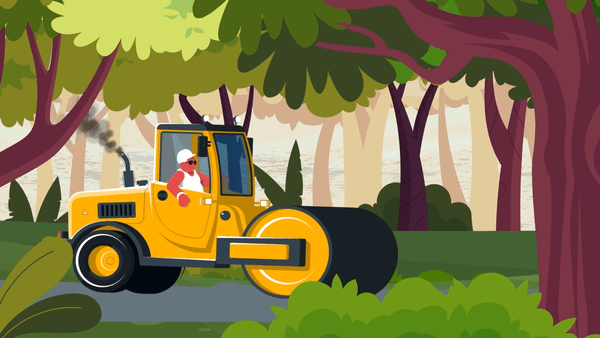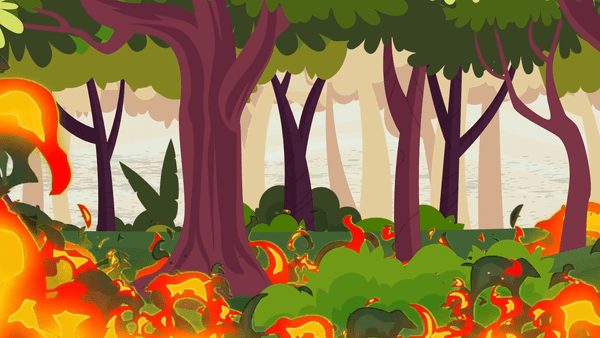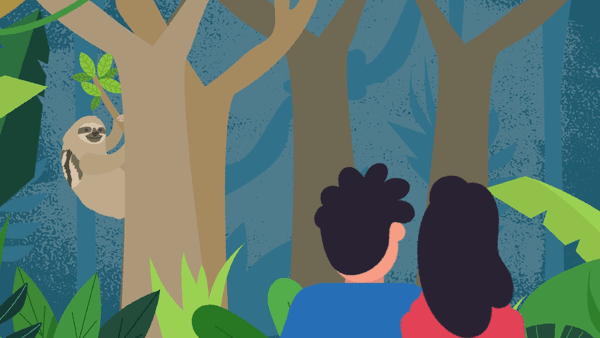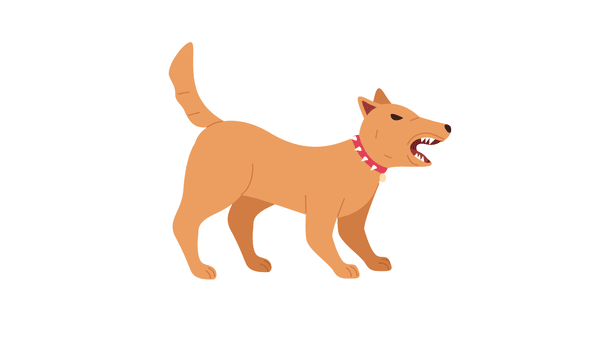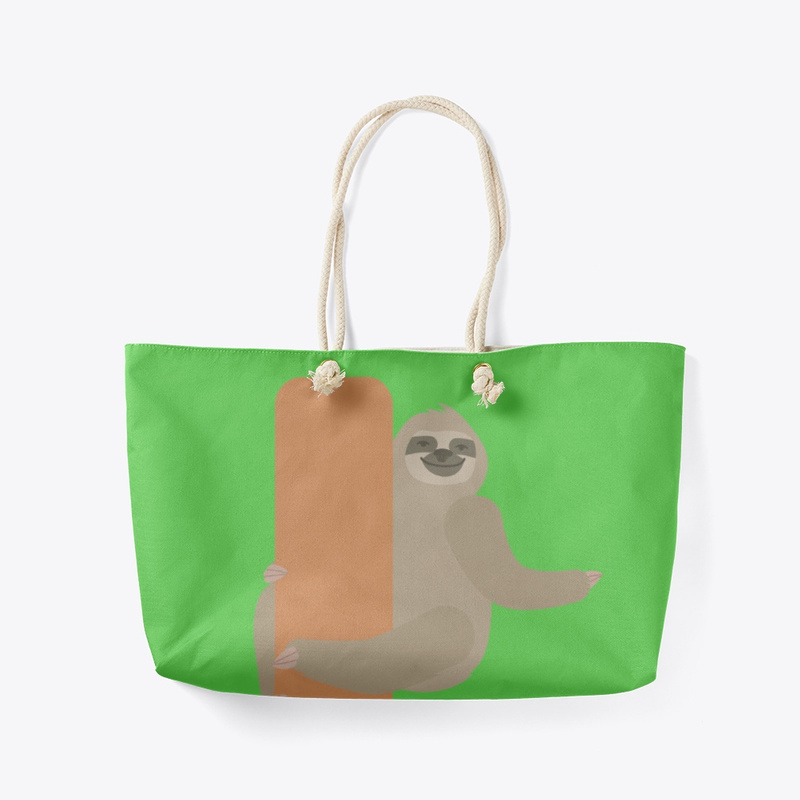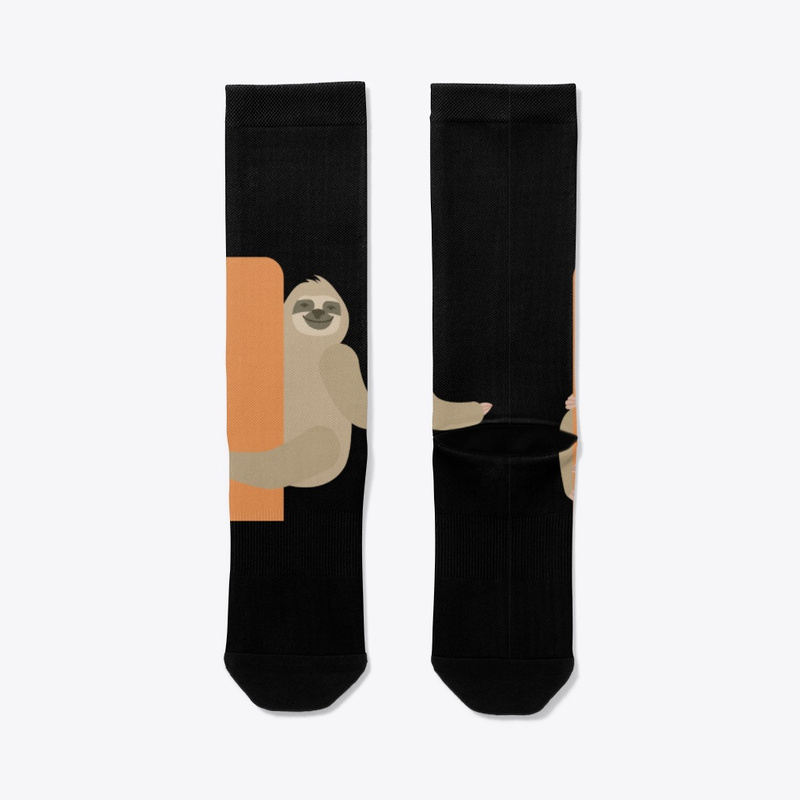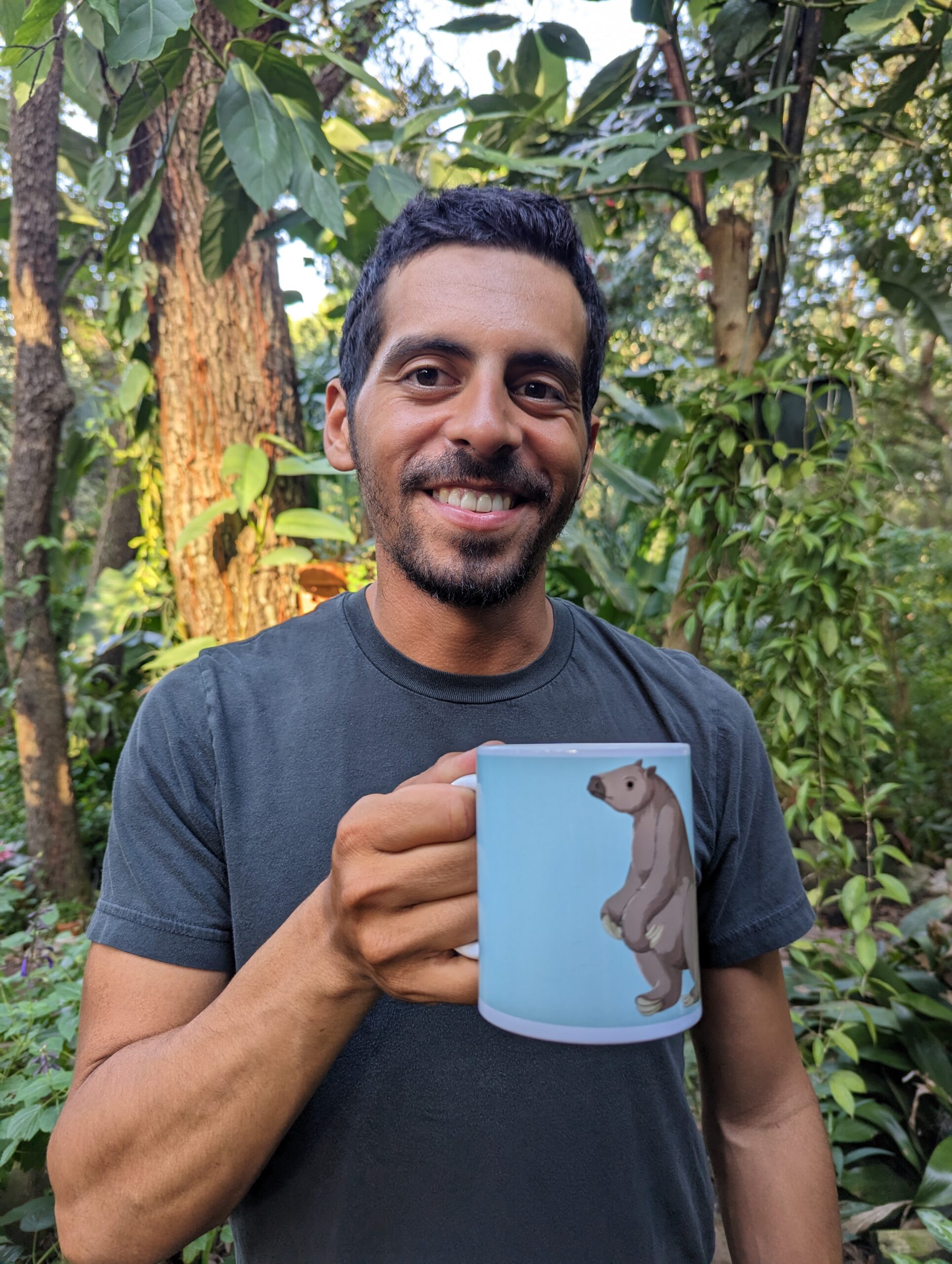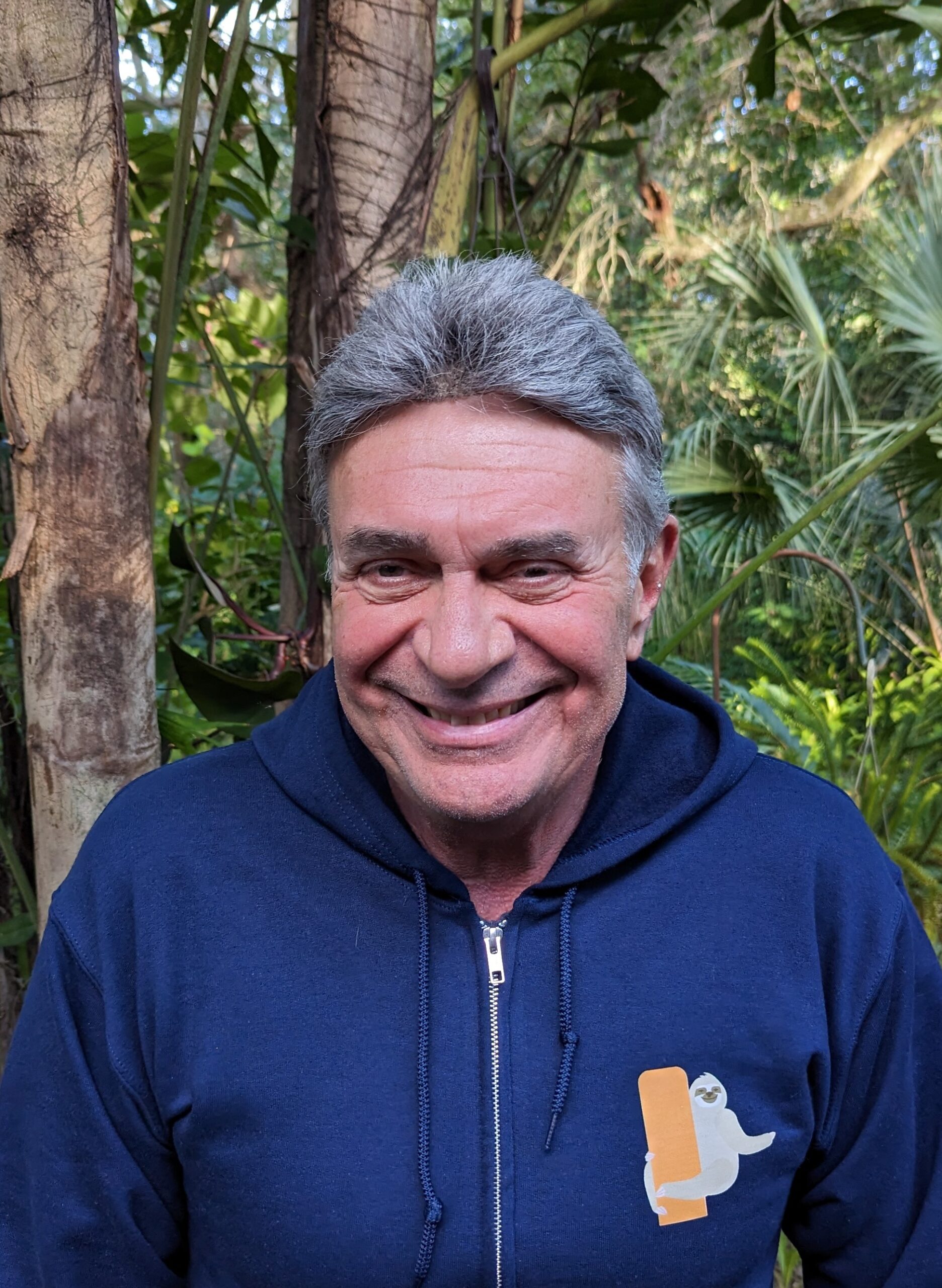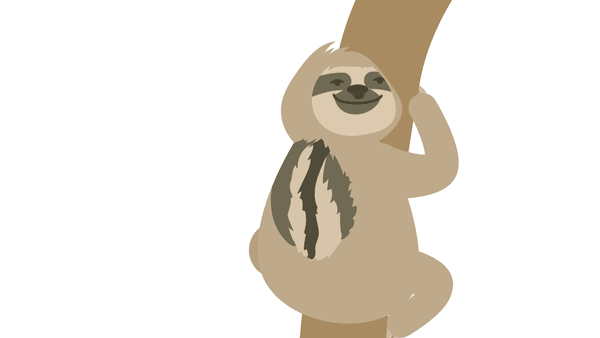
Brown-throated three-fingered sloth
Bradypus variegatus
Lifespan: Estimated to be 12-15 years
Reproduction: 1 offspring every 10-12 months
Size: Average adult 4.7 kg
Diet: Eats over 50 plant species
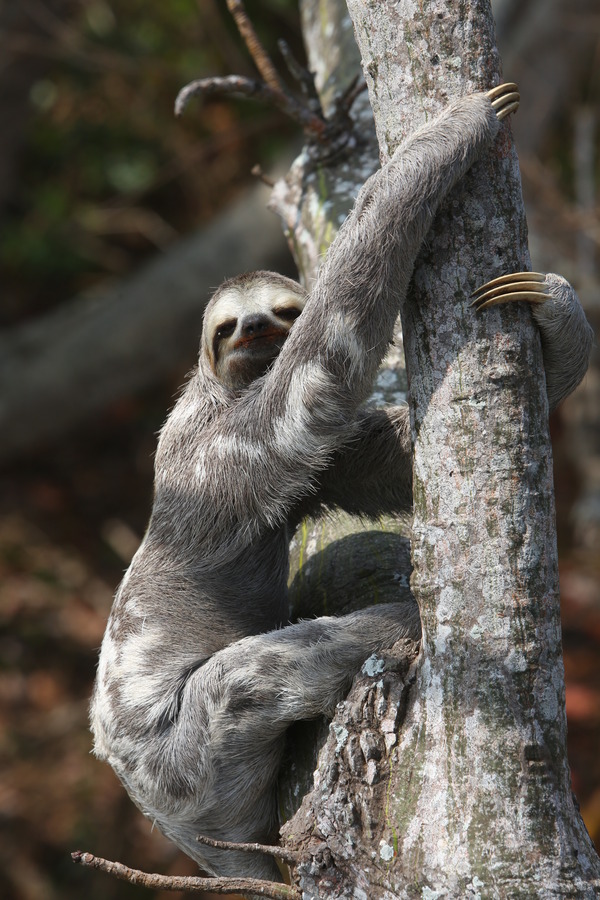
Common Names
English – Bolivian Three-toed Sloth, Brown-throated Sloth, Brown-throated Three-fingered Sloth, Brown-throated Three-toed Sloth
French – Aï De Bolivie, Bradype, Paresseux Tridactyle, Paresseux Tridactyle De Bolivie
German – Braunkehl-Faultier
Portuguese – Ai, Bicho-Preguiça, Preguiça, Preguiça de Óculos, Preguiça-Comum
Spanish- Guasa, Perezoso Bayo, Perezoso Grisáceo, Perezoso Tridáctilo, Perico Ligero
How to Identify:
Similar species possibly found in the same area: Bradypus variegatus Choloepus didactylus and Choloepus hoffmanni Bradypus variegatus has three fingers – not two! B. variegatus has a mask on the eyes compared to the two-fingered sloths. Bradypus tridactylus Bradypus variegatus has a brown throat and Bradypus tridactylus has a yellow throat. Bradypus torquatus Bradypus variegatus does not have a black mane on the neck and collar like Bradypus torquatus.
IUCN Red List
Species are classified into one of nine Red List Categories: Extinct, Extinct in the Wild, Critically Endangered, Endangered, Vulnerable, Near Threatened, Least Concern, Data Deficient and Not Evaluated. Vulnerable, Endangered and Critically Endangered species are considered to be threatened with extinction.

Brown-throated three-toed sloth Facts
• Males have a middorsal speculum (Short black and orange fur covered with oil that helps attract mates)
• Does not do well in zoo settings, so we must protect their wild habitat.
• The genus name, Bradypus, is from Greek for slow-footed.
• The species name, variegatus, refers to the wide variety of colors and patterns.
• They descend to the ground to poop on average every 8 days!
Habitat
- Cacao plantations
- Cloud forests
- Tropical forests
 Population Trend
Population Trend
• Decreasing
 Threats
Threats
- Accidents on roads
- Habitat loss and deforestation
- Hunting
- Illegal pet trade
- Selfie tourism
- Wildfires
Here are some ways YOU can help keep sloths healthy and safe:
– It is best to observe them from a distance and in silence.
– Our pets could attack them. It is important to keep your dog on a leash when you go for a walk, or keep your pets at home in an enclosed and safe area. In addition, taking care of our pets also means spaying and neutering them so that they do not breed without control.
– Sloths love to live in the woods, keeping them as pets is not good for them. Keep in mind that they don’t like selfies either.
– If you find an injured sloth, contact a wildlife hospital so they can help it.
– Deforestation is often caused to make more land for livestock. Eating less meat may help save our forests.
Test your new knowledge!
Test your new sloth skills by visiting our sloth word search, puzzles, coloring sheets and name games!
Check out this video to see how much you have learned!
The Anteater, Sloth, Armadillo Specialist Group has a store that directly helps xenarthran conservation!
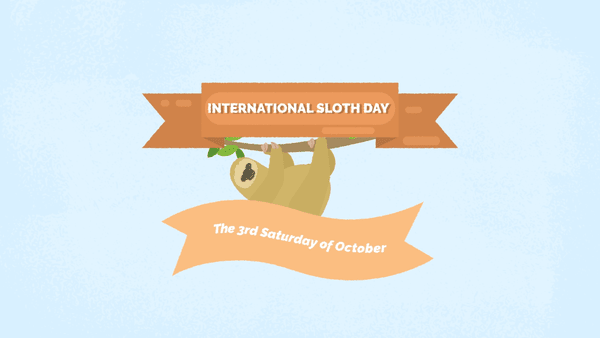
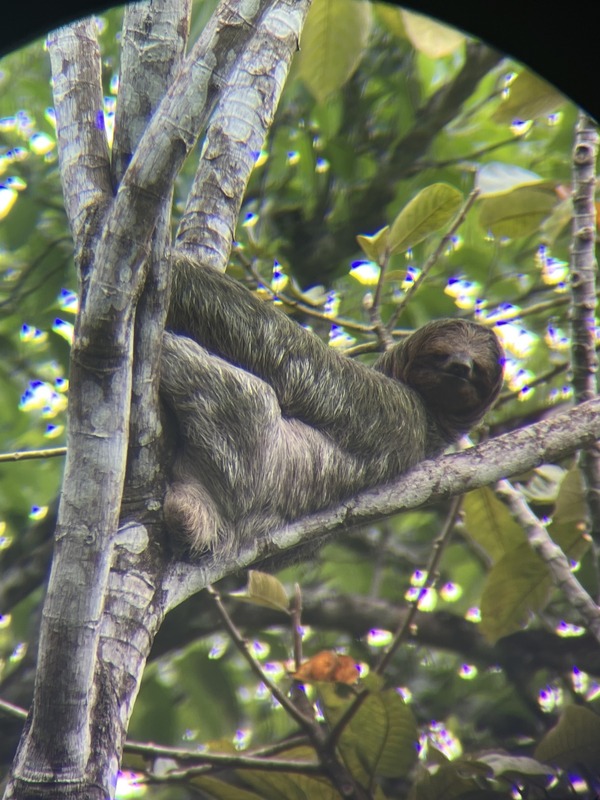

 Population Trend
Population Trend Threats
Threats
